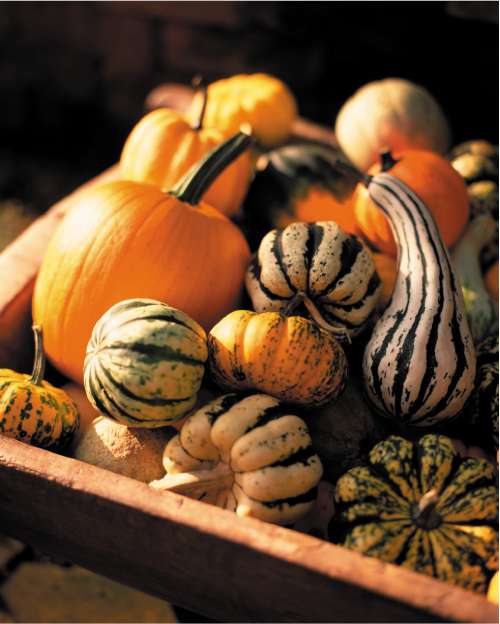Urban gardener: Currying flavour

Your support helps us to tell the story
From reproductive rights to climate change to Big Tech, The Independent is on the ground when the story is developing. Whether it's investigating the financials of Elon Musk's pro-Trump PAC or producing our latest documentary, 'The A Word', which shines a light on the American women fighting for reproductive rights, we know how important it is to parse out the facts from the messaging.
At such a critical moment in US history, we need reporters on the ground. Your donation allows us to keep sending journalists to speak to both sides of the story.
The Independent is trusted by Americans across the entire political spectrum. And unlike many other quality news outlets, we choose not to lock Americans out of our reporting and analysis with paywalls. We believe quality journalism should be available to everyone, paid for by those who can afford it.
Your support makes all the difference.If I was only allowed to grow one vegetable at the allotment this year it would be tinda, a small round gourd some 5-8cm in diameter and a native to India. Tinda, which is Punjabi for "Indian Baby Pumpkin", is not too dissimilar to a small apple or green tomato and makes the most delicious curry. I was introduced to it last year by Davinder Singh, our guide during a visit to Simla in the Himalayas. He was the only other vegetarian in our group and had the uncanny knack of sniffing out tinda anywhere, be it in a restaurant or a private residence. If it wasn't on the menu, a quiet word in the waiter's ear was all that was necessary, the extra wait a small price to pay for this gastronomic bonanza. The taste, lighter and sharper than the squash we normally grow, had a freshness about it, the piquancy providing a welcome change to the curries we were used to.
I'm not quite obsessed with it, but if the Kastoori in Tooting, south London (my favourite Indian restaurant in the cosmos) ever has it on the menu I will buy extra portions to take home and freeze. I will also be scouring some of the local Indian grocers, the only shops likely to stock it from late May onwards. In the meantime, though, it makes sense to see if we can grow it, so I've placed an order with an American company, Seeds of India ( www.seedsofindia.com). They have it down as Citrullus vulgaris, but experts among you will know that this is the Latin name for watermelon. Nevertheless, they offer an exciting range of exotic vegetables, including bittergourd, ridgegourd and ash gourd. But one step at a time – if I manage to grow tinda successfully, I'll let you know.
Squash is a staple for us during winter as it stores so well. There are over 100 different types but we only ever have room to grow two or three varieties each year, such as uchiki kuri, blue hubbard and butternut. Occasionally we'll throw in the smaller Jack Be Little to scramble wherever it can get a grip. To grow them well you need space for the long stems to trail (either in a circle or off-piste) and take root along the way, maximising their ability to take up nutrients. They are greedy feeders and some of our best crops have come from planting them directly into a mature compost heap. That doesn't mean to say that spatially challenged urban gardeners without allotments can't have a slice of the action, as squash can be trained to grow skywards either from the ground or from large containers – provided extra care is taken to provide the sustenance they need (well-rotted, home-made compost is best, and water). Support is needed either by trellis or a wigwam arrangement of bamboo poles and, if you have the right place for it, an arbour or pergola can make an interesting, albeit temporary feature. The smaller varieties obviously place less demand on the plant's fragile stems.
Squash falls within the cucurbit family, which includes courgette, marrow, cucumber and melon. They are some of the easiest vegetables to grow and are often recommended for novices at the allotment as the large leaves help shade out weeds, making lighter work in the first season. The significance of this shouldn't be underestimated, as much hinges on the first encounter with vegetable growing if it is to become a lifetime's habit.
The impatient gardener may already have a range of squash germinating in the greenhouse, but we have learnt to bide our time and sow our seed towards the end of this month in two-litre pots so that they will be ready for planting at the end of May when cold nights are retreating. Squash dislikes any sort of check in growth, which is why a sudden drop in temperature can leave them sulking for days and susceptible to mildew and attack by slugs. Large squash can be encouraged by pinching out flowers or embryonic fruit, allowing just three to mature. A good soak once a week is far better than little and often, and leaves can be cut to allow sunshine through to ripen the skin for winter storage. I've no idea how well tinda will store, but if I manage to grow them, storage will be the last thing on my mind.
Join our commenting forum
Join thought-provoking conversations, follow other Independent readers and see their replies
Comments